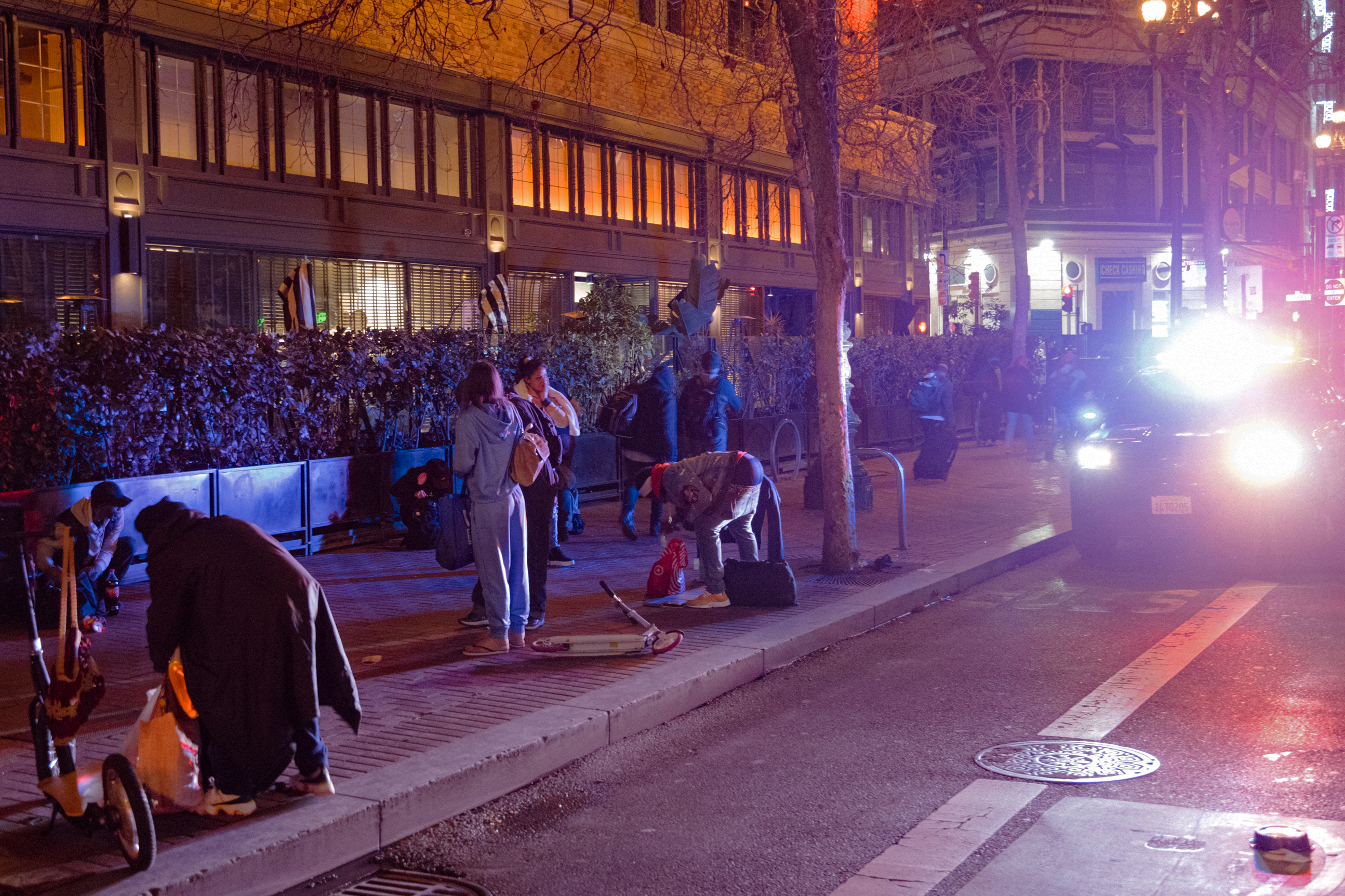A new phase of the multiagency drug dealing crackdown has begun in San Francisco, as police officers were spotted chasing down suspected dealers near United Nations Plaza at night.
The revitalization of U.N. Plaza, long considered the epicenter of the city’s drug crisis, has been touted as a success story by Mayor London Breed since a new skate park was installed in November.
However, critics said the skate park only made things safer in daylight hours. The Standard visited U.N. Plaza after dark on several occasions and witnessed a dramatic shift from daytime skating to the nighttime scene of open-air drug use, dealing and the vending of seemingly stolen goods.
On Wednesday night, The Standard saw sheriff’s deputies and police officers disperse a large crowd of people using and selling drugs outside the Asian Art Museum on Hyde Street before chasing at least one suspected dealer down and detaining them. Other people with their faces covered stood unbothered, with some filming the incident on cellphones.
Across the plaza, at the corner of Market Street near Seventh Street, police officers were issuing citations for illegal vending with Department of Public Works staff.
“They’re on both sides,” a man using fentanyl warned the crowd as officers closed in near the Asian Art Museum.
“This is what’s been happening,” another man named Jay, who refused to give his last name for fear of criminal repercussions, told The Standard before making a break for it to evade cops.
The officers cited and arrested people engaged in drug activity around the museum, but at least one suspected drug dealer ran away, resulting in a foot chase that ended on the north side of the plaza by McAllister Street. The Standard asked for more details on the arrests but didn’t receive a response by publication time.
The crowd heckled the cops as they made the arrest. One man taunted an officer, claiming he’d seen them on a reality television show.
“I’m not afraid of them,” the man proclaimed to the crowd.
The Drug Enforcement Agency, California Highway Patrol and local law enforcement agencies have worked together in the city’s SoMa and Tenderloin neighborhoods on the crackdown since May.
However, many people have continued gathering in the plaza at night, leading some to criticize the city for merely moving the problems around.
Now, the city is officially ramping up its enforcement presence in the plaza after dark, according to Evan Sernoffsky, head of communications for the police department.
“We have had success in other areas, and we are now devoting more resources to addressing night-time illegal activity along Market, Seventh and McAllister streets,” Sernoffsky said in an emailed statement.
Since May 30, the city has made 2,308 arrests as part of these efforts, Sernoffsky said.
But the arrests haven’t come without criticism, as some people allege the city may be contributing to a surge in overdose deaths.
Some health experts warn that enforcement may cause some people to use drugs in hiding, away from others who can render medical aid if they overdose. A record 806 people died of overdoses last year, according to preliminary data from the Chief Medical Examiner’s Office.
The enforcement plan rolled out with the promise of offering treatment to people arrested for public intoxication. However, as of Sept. 8, only two people had accepted treatment out of 476 arrested, according to the department.
